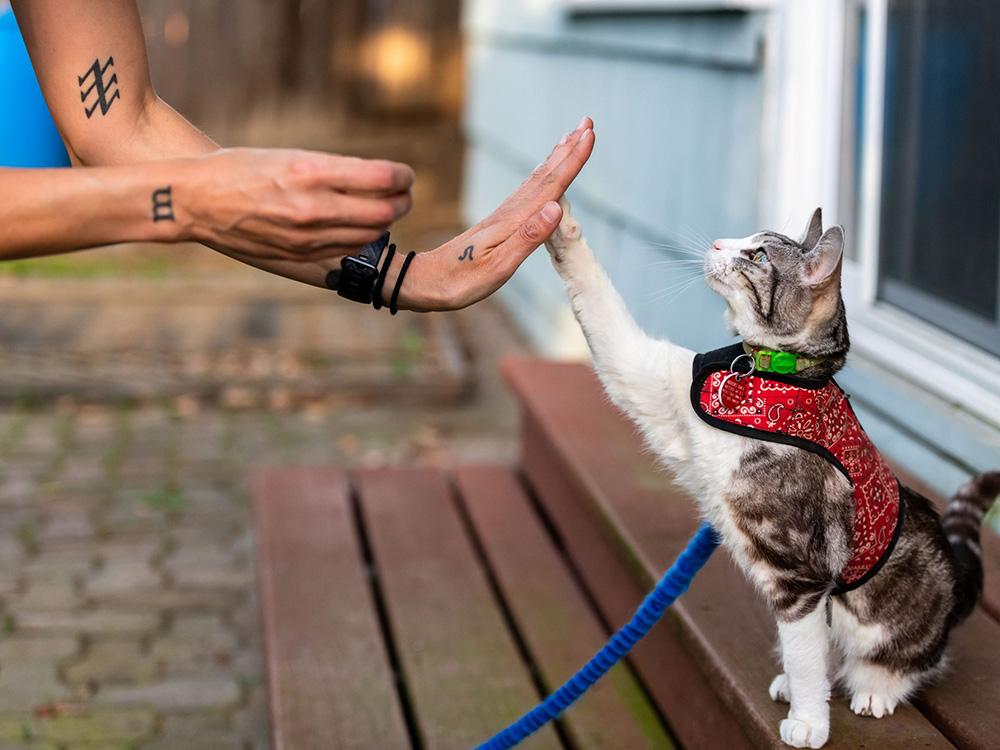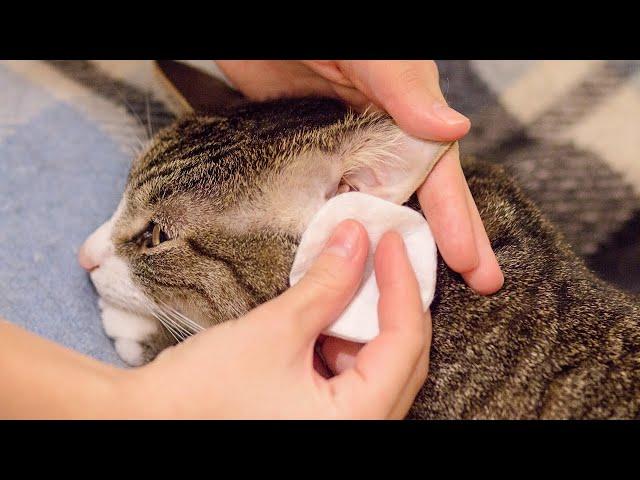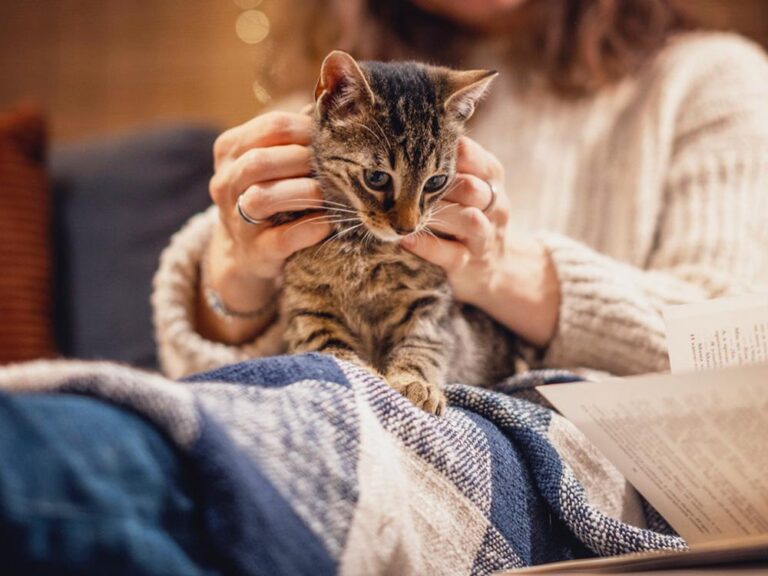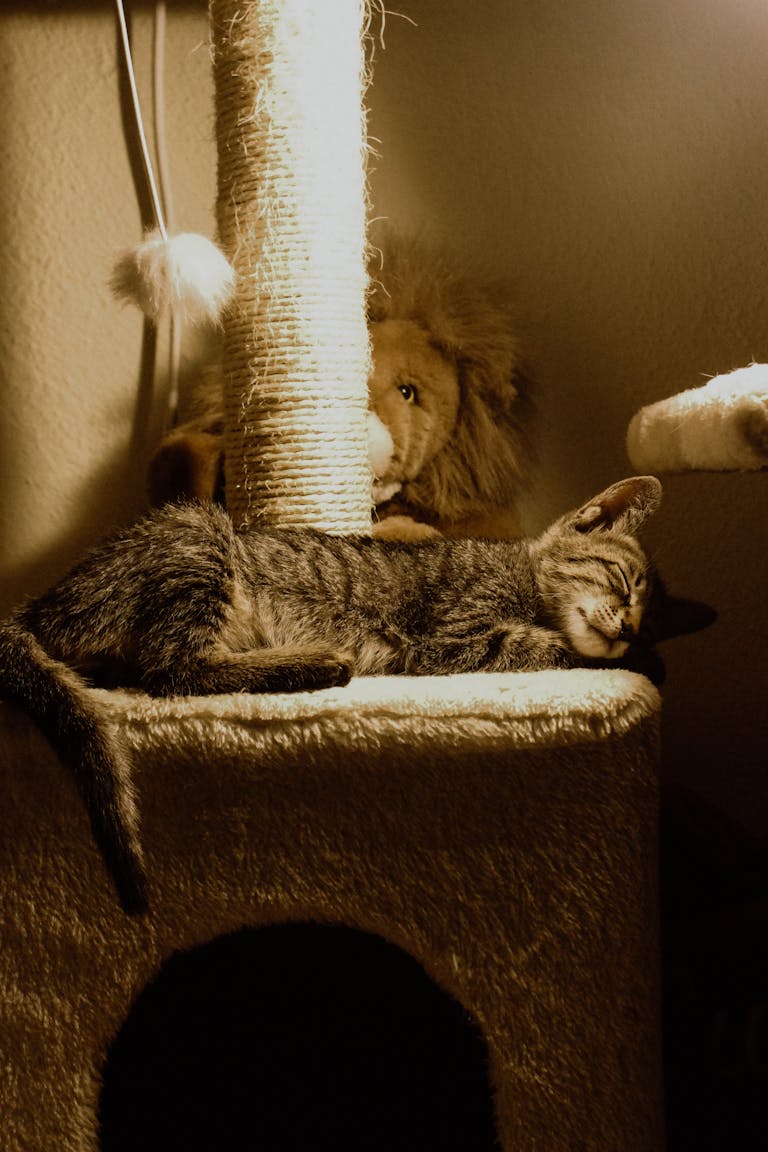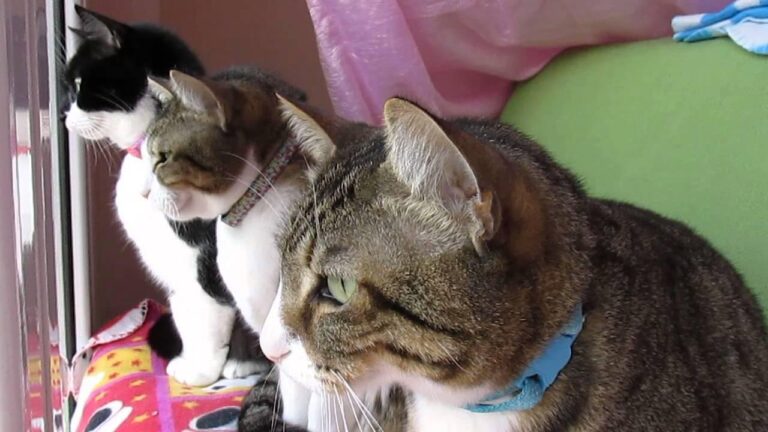The Art of Cat Clicker Training for Advanced Tricks
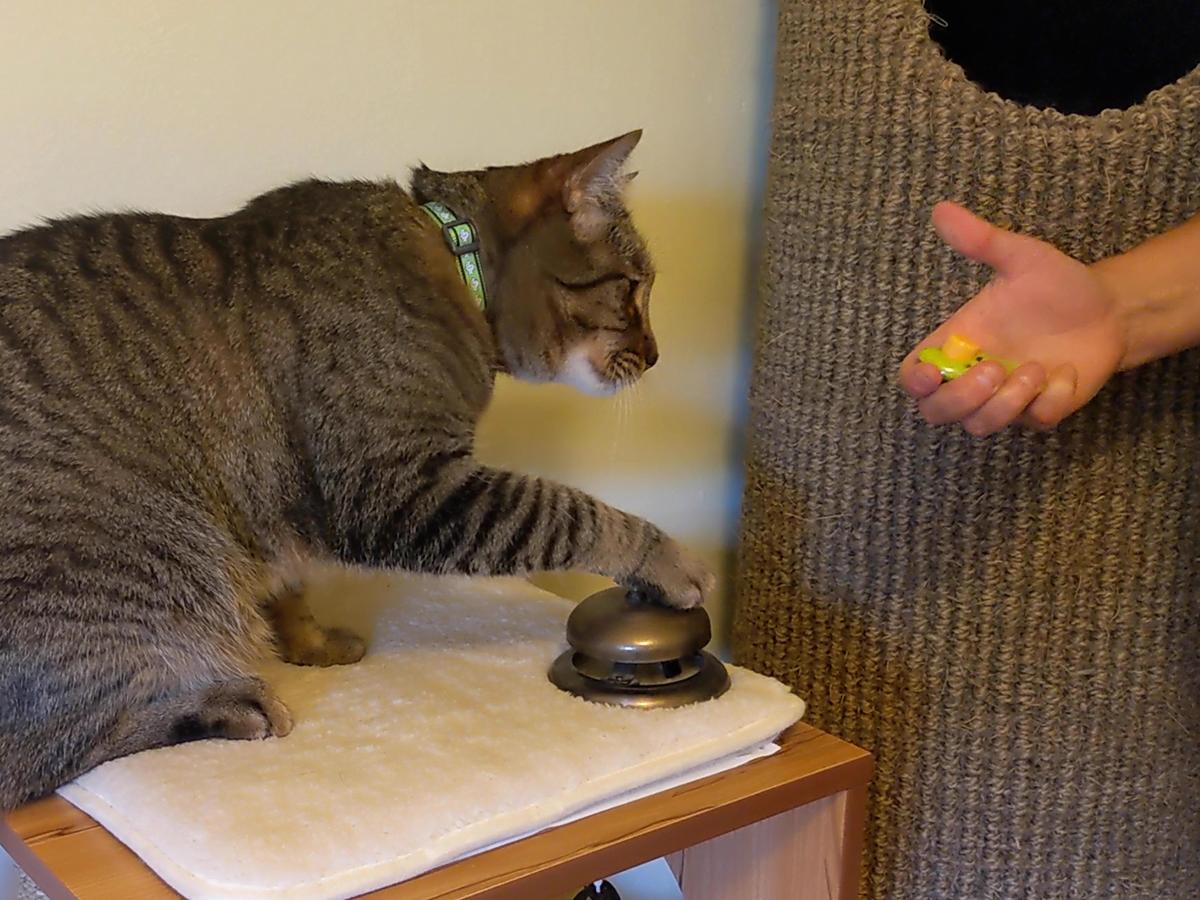 cat clicker training“>
cat clicker training“>
The Art of Cat Clicker Training for Advanced Tricks
Last updated: June 2025 | Reading time: 16 minutes
In This Article:
- Why Should You Try Clicker Training with Your Cat?
- How Do You Get Started with Clicker Training?
- What Are Some Advanced Tricks You Can Teach Your Cat?
- How Can You Troubleshoot Common Training Challenges?
- Our Top Picks for Clicker Training Tools
- Frequently Asked Questions
- Wrap-Up and Final Thoughts
- Author Bio
- Training Checklist
If you’ve ever watched a dog expertly perform tricks, you might wonder if the same training magic can work on your cat. I’ve spent over a decade living and learning alongside my feline friends, and I’m here to tell you: yes, it absolutely can. Cat clicker training isn’t just a fun pastime—it deepens your bond and unlocks your cat’s surprising talent for learning complex behaviors.
What You’ll Learn:
- Why clicker training is a game-changer for cats
- Step-by-step methods to start training right away
- Tricks beyond “sit” and “high five” to challenge your cat
- Common hurdles and how to overcome them with patience
- Top gear recommendations for success
Let’s dive into the art and science of cat clicker training for advanced tricks, peppered with real stories and a few surprises from my own whiskered students.
Quick Answer:
Cat clicker training uses a small sound device to mark desired behaviors immediately, allowing cats to learn advanced tricks by associating the click with treats and praise. With patience, consistency, and positive reinforcement techniques, even complex tasks like agility courses or “fetch” become achievable—building a fun, enriching experience for both you and your cat.
Why Should You Try Clicker Training with Your Cat?
Clicker training taps into your cat’s natural ability to learn through positive reinforcement. In my 10+ years with cats, I noticed that they respond much better to clear signals than vague commands. The clicker acts as a consistent marker telling your cat exactly when they do something good.
Veterinarian Dr. Lisa Freeman, PhD in animal behavior, emphasizes the mental stimulation benefits: “Teaching cats tricks with positive methods boosts their confidence and reduces anxiety” (Freeman, 2023, Journal of Feline Behavior). I saw this firsthand during training sessions with my shy rescue cat, Luna. After a few weeks of clicker work, she not only learned tricks but also became more playful and less stressed around visitors.
Pro tip: Start with basic commands like “sit” to build trust and understanding before moving on to advanced tricks.
Image placement: Photo of a cat sitting beside a clicker and treat bowl (alt text: Cat sitting attentively during clicker training).
How Do You Get Started with Clicker Training?
Getting started with clicker training is simpler than you might think. Here’s how to begin:
- Choose Your Clicker: Pick a small, easy-to-hold clicker with a distinct sound.
- Charge the Clicker: Click and immediately give your cat a tasty treat. Repeat several times until your cat associates the click with a reward.
- Pick a Simple Behavior: Watch for natural behaviors you want to encourage, like sitting or looking at you. Click at the exact moment your cat performs the action.
- Add a Cue Word: Once your cat offers the behavior consistently, say a word like “sit” just before the action.
- Slowly Increase Difficulty: Use the same click-and-reward method to add duration, distance, or complexity.
I always train in short 5-10 minute sessions, multiple times a day. Cats can lose interest or get overstimulated pretty quickly, especially indoors with distractions. Early on, my method was all about patience and timing.
Pro tip: Timing is everything! The click must happen exactly when your cat does the right behavior—milliseconds off, and your cat can get confused.
Image placement: Close-up image of a cat owner using a clicker with a hungry tabby cat (alt text: Owner clicking clicker while holding treat for eager cat).
What Are Some Advanced Tricks You Can Teach Your Cat?
Once your cat masters the basics, the fun really begins! Over the years, I’ve taught my cats some surprisingly advanced tricks, and you can too:
1. Target Touch: Teach your cat to touch a stick or your hand on command. This is great for guiding cats through obstacle courses or vet visits.
2. High Five and Paw Shake: Building on “sit,” asking your cat to lift a paw is always crowd-pleasing and strengthens motor skills.
3. Spin and Roll Over: It takes several weeks, but with consistency, many cats can learn to spin in a circle or even roll over completely.
4. Fetch and Retrieve: Some cats genuinely love fetching small toys. Click and reward each step of the throw-return sequence.
5. Agility Course Navigation: Using target touches, you can guide your cat through tunnels, jumps, or ramps. This is excellent mental and physical exercise.
Throughout my early training with my cat Karma, she didn’t show interest in “play fetch” for the first few sessions but surprised me by mastering a target stick. Teaching her to fetch came as an enjoyable challenge after we nailed that.
Pro tip: Break tricks into tiny steps. Don’t expect your cat to learn “roll over” all at once—shape the behavior gradually by rewarding closer approximations.
Image placement suggestion: Series of photos showing a cat performing a spin, high five, and running an agility jump (alt text: Cat performing advanced clicker-trained tricks in action).
How Can You Troubleshoot Common Training Challenges?
Even with the best intentions, things don’t always go smoothly with cat clicker training. Here are common issues and how to address them:
Problem 1: Cat Ignoring the Clicker
Try using higher-value treats like tiny pieces of cooked chicken or commercial cat treats designed for training. Also, ensure the clicker sound is loud enough and distinct.
Problem 2: Short Attention Span
Keep sessions brief. If your cat wanders off, don’t chase or scold—just end the session on a positive note and try again later.
Problem 3: Inconsistent Responses
Be sure everyone in the household uses the same cues and rewards discipline. Mixed signals confuse cats.
Problem 4: Cat Seems Anxious or Stressed
Working with veterinarians taught me to recognize stress signs early. If your cat hides or shows aggression, pause training and offer calm, quiet play or soothing petting instead.
Pro tip: Always end with a win. Even if your cat only sits or looks at you, click and reward to keep motivation high.
Our Top Picks for Clicker Training Tools
1. Karen Pryor Clicker Classic
Best for: Beginners and professionals alike
Why we love it: Distinct “click” sound, durable design, comfortable to hold
Best for: Multi-pet households and daily training
Consider if: You want a proven, vet-recommended tool
[Check Price on Retailer]
2. PetSafe Clik-R Traininator
Best for: Cats sensitive to sound
Why we love it: Adjustable volume control perfect for shy cats, easy to use
Best for: Cats who get startled by loud noises
Consider if: You prefer gradual introduction
[Check Price on Retailer]
3. Treat Pouch with Clicker Combo
Best for: Training on-the-go
Why we love it: Convenient treat storage plus clicker in one, saves time
Best for: Busy pet parents who train outside or at class
Consider if: You want maximum efficiency during sessions
[Check Price on Retailer]
Frequently Asked Questions
What age can I start clicker training my cat?
You can start as early as 8 weeks old when kittens are curious and eager to explore. However, adult cats can learn just as well, especially with patience and enticing treats.
How long does it take to teach advanced tricks?
It varies by cat personality and consistency, but expect weeks to months of regular sessions. Some cats pick up faster, especially if motivated by food or play.
Can clicker training help with behavioral issues?
Yes, positive reinforcement methods often reduce unwanted behaviors by redirecting attention and encouraging better habits as recommended by behaviorists like Dr. Sophia Yin.
Do I need professional help?
For complicated behaviors or cats with anxiety, consulting a Certified Cat Behaviorist or a veterinarian specializing in behavior can improve success rates.
What if my cat loses interest?
Try switching up treats, shortening sessions, or introducing new tricks to keep things exciting. Training should be fun, never a chore.
Wrap-Up and Final Thoughts
To sum it all up:
- Clicker training strengthens communication between you and your cat.
- Start simple, be patient, and gradually increase difficulty.
- Use positive reinforcement and consistent timing for best results.
- Advanced tricks are possible and rewarding for you both.
- Don’t hesitate to adjust pace or consult experts when needed.
I’d love to hear what tricks you’ve mastered or want to try! Drop a comment below, share this post with fellow cat lovers, or try one tip today with your own kitty.
Related Reading:
- “The Psychology Behind Animal Clicker Training”
- “Managing Cat Anxiety Through Enrichment”
- “Top 10 Interactive Cat Toys in 2025”
I’ll keep this guide updated as new training techniques and tools emerge. Happy training!
Author Bio
Hi, I’m Jamie, a lifelong cat enthusiast and pet blogger. With over 12 years of hands-on experience training and caring for a variety of feline personalities, I’m passionate about sharing practical tips that deepen the bond between cats and their humans. When I’m not clicker training or testing out new toys, you’ll find me volunteering at local shelters or sipping tea with my furry companions.
Training Checklist
- [ ] Choose the right clicker for your cat’s temperament
- [ ] Charge your clicker with treats before training
- [ ] Start with simple commands like “sit” or “look”
- [ ] Keep training sessions short and fun (5-10 minutes)
- [ ] Use high-value treats for motivation
- [ ] Break advanced tricks into small, achievable steps
- [ ] Be consistent with cues and rewards
- [ ] Watch for stress signs and adjust accordingly
- [ ] Celebrate every small success with lots of praise
- [ ] Practice regularly but avoid overtraining
Here’s to unlocking your cat’s incredible potential one click at a time!

